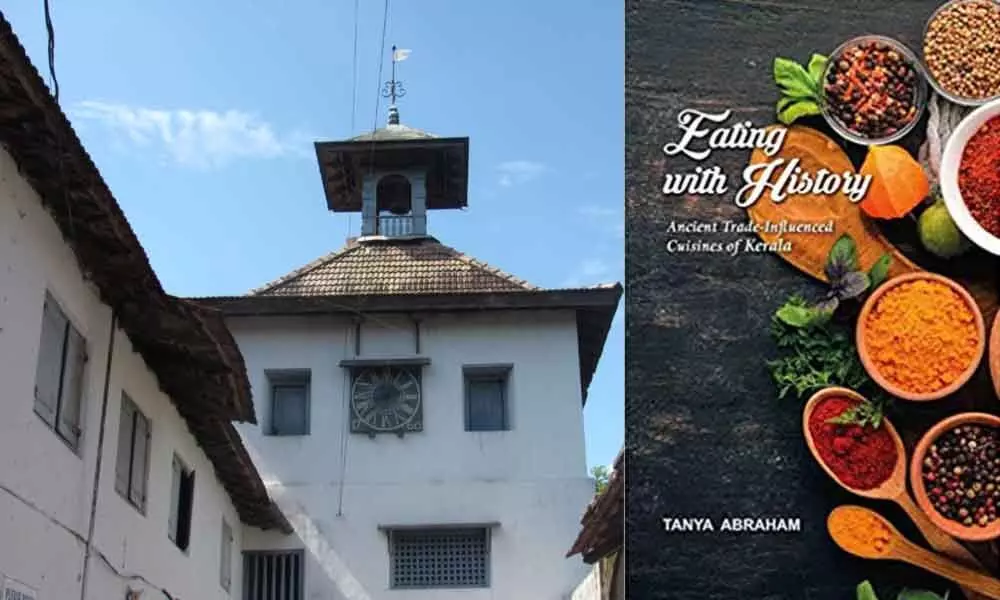Kerala food: Eating with History

Jewish Clock Tower in Kochi, built by the Jewish trader Ezekiel Rahab in 1668, which stopped working in 1932, was restored in the nineties. It has only three faces. The one with Roman numerals faced Jew Town, the one with ancient Malayalam numbers faced the rajah’s palace, and the last one in Arabic numericals faced the sea for traders. An important landmark of the region’s cultural evolution and emergence
In the heart of Kerala, lies the love of its people for food. As cultures and traditions thrived in the state, food found a prominent position in people's lives. Influenced greatly by traditions, religious beliefs and trade, it led to the emergence of a variety of cuisines. In kitchens brewed recipes that came from innovative ideas and new ingredients, marrying to form exclusive and distinct flavours. These flavours changed from one community to another, even from one household to another. Food entwined itself intricately to people's lives and became an inextricable part of living.
Kerala's history is soaked in stories of cultural diversity and a heritage that has created an identity unique to it. The story goes that when Lord Parasuram, one of the ten avatars of Lord Vishnu, threw his axe into the Arabian Sea, he fetched out a piece of land that bore great beauty and wealth. And thus, the story of spices began, found in the verdant, tropical forests of Kerala. News of this rich land spread across the oceans, and ships plied their way to its shores in search of wealth. With the arrival of new cultures, emerged new communities, which created a blend of people unique to Kerala alone. A significant part of this cultural emergence was the birth of various cuisines, developed as a consequence of religion, rituals, foreign food ingredients, and the adaption of local food to favour new palates. The marrying of communal traditions meant the coming together of new practices, of which food remained a significant explanatory of identities that made a community unique. The recipe books of yore that have preserved food that emerged from foreign influences, trace their emergence to the spice trade; the ancient seaport of Muziris and regions of the Malabar, which lured ships to its shores in search of black pepper. Tamil literature refers to yavanas (foreign ships, from Rome and Egypt) arriving with gold and perfumes and returning with pepper.
Pliny the Elder, a Roman writer, writes, 'It is quite surprising that the use of pepper has come so much into fashion, seeing that for other substances which we use, it is sometimes their sweetness and sometimes their appearance that has attracted our notice; whereas, pepper has nothing in it that can plead as a recommendation to either fruit or berry, it's only desirable quality being a certain pungency; and yet it is for this that we import it all the way from India!' Pliny was the first to make trial of it as an article of food.
With trade came new religions, new identities and new ways of living. The reason for the unique flourishing of communities for centuries owes its gratitude to the rulers of the time who welcomed foreign settlements, for the main reason of economic gain. Seen as highly tolerant and secular in thought, the ruling kings offered land and permission to new nationalities to establish their communities, including permission to marry local women and raise families. This open acceptance of foreign cultures saw the rise of new communities, and the growth of a society that flourished as a melange of these. The cultural identities, which developed through foreign contact, in spite of the tolerant climate that prevailed, held tightly to identities in the form of rituals, religious practices, and specific food habits (specific kinds of food remained closely attached to specific cultures, the adulteration of which was minimal). It is important to understand that, for the evolution of these new cuisines, there was an interesting development of food associations such as food laws and ingredients used by distinct sections of people, in distinct manners.

